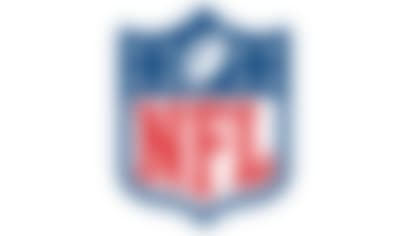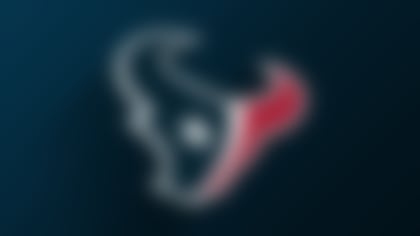Note: The following story can be found in the Super Bowl XLIII official game program. Preorder a copy here.
A half-century later, when the epic contest is sanctified as pro football's seminal moment, it is easy to recognize the elements that made the 1958 NFL Championship Game the stuff of legend. It had two compelling antagonists (the Colts and Giants), a charismatic leading man (the Colts' John Unitas, whose myth of unflappable leadership was cemented here), lasting controversy (did the Giants' Frank Gifford actually gain the first down that would have clinched the game late in the fourth quarter?), and an unprecedented historical landmark (pro football's first journey into sudden-death overtime).
Today it is rightly viewed as the tipping point in the game's development, the instant that pro football's barnstorming, low-rent past was transformed into its gleaming, high-tech future. In the ghostly mist of a late December day in Yankee Stadium -- when Alan Ameche burst over right guard to a hail of applause from 20,000 visiting Colts fans and a blizzard of photographers' flash bulbs -- the Colts secured a 23-17 overtime victory, and the National Football League announced its arrival as a force with which the grand old game of baseball would soon have to reckon.
Greatest game ever
But how many of those in the stadium suspected they had just witnessed the most legendary game in the history of professional football? How many of the 45 million Americans who saw it on television (among them President Dwight Eisenhower, who watched from Camp David) recognized its lasting significance? Who knows when they are standing at history's crossroads? The TV people seemed to understand. Ameche was invited to appear on the live telecast of that night's Ed Sullivan Show (Unitas was asked first, but passed on the $300 so he could be with his teammates).
But for many of the people within the game, there was little perspective at that point. For as long as its caretakers could remember, pro football had been living hand to mouth. Outside of razor blades and beer, advertisers were hard to come by. Many NFL teams were only then starting to scrape out an annual profit. The league had spent its entire existence living in baseball's shadow.
Inevitably perhaps, most observers thought it was just another well-played football game. Red Smith's column in the next day's New York Herald-Tribune wasn't on the game but on the firing of Notre Dame grid coach Terry Brennan.
When the Colts' Art Donovan returned home to his parents' house in Brooklyn, N.Y., the morning after the monumental affair, proud of his team's title and the championship winner's share that came with it, he was confronted by an old neighborhood acquaintance who spotted him loitering outside a grocery store and asked, "Artie, you bum ... you out of work again?"
So the question compels even today: If it was indeed the best and most important game in pro football history, who knew it at the time?
Chris Schenkel knew. So did Richard Nixon.
The announcer had called NBC's national broadcast of the game and stopped down in the Giants locker room after the contest to console the losers. In the midst of the dejected gladiators, he greeted reserve offensive lineman M.L. Brackett, who was getting ready to return to his home in Alabama for the offseason.
Schenkel walked up to his friend and said, "I want you to do something. One thing: I want you to remember this game. Because this is going to go down as the greatest game ever played."
Brackett and the other Giants thought little of it at the time. Gifford, the star halfback, was crestfallen for letting down his teammates and his father, who had traveled from California to see him play, by committing two fumbles.
A few days later, though, he received a letter from Nixon. The vice president had sat down to write Gifford just minutes after what he referred to as "that fabulous play-off game. ... I know you must be disappointed as to the result. But certainly you can be proud of the superb performance you gave. In any event, it was a great season for the Giants, for football, and for you personally."
Tim Mara knew.
The man who'd bought the New York Giants football team for $500 in 1925, and then received an offer of $1 million to sell 25 years later, quickly understood the meaning of the game. His son Wellington would well remember the last days of Tim's life. In the weeks following the game, the elder Mara often arrived at the Giants' offices early and would be delighted to see a dozen or more ticket renewal forms in the morning post. Renewals were coming in at a record pace, before the team's sales pitch had even begun. Tim Mara passed away on February 16, 1959, but his final days were happy ones.
"He'd say, 'We're gonna sell out next year,'" Wellington Mara recalled. "He died on a real high."
And Tim Mara was right.
Attendance in the NFL went up every year in the 1950s, and the game was becoming a magnet for the upwardly mobile middle-class suburban set that commuted to Manhattan each weekday, and to the Bronx for home games on Sunday. Later that year, Time magazine put Giants linebacker Sam Huff on its cover, accompanied by the blurb "Pro Football: Brawn, Brains & Profits."
Bert Bell knew.
The commissioner of pro football, raised on the Main Line in Philadelphia and who in 1933 bought the defunct Frankford Yellow Jackets and turned them into the Philadelphia Eagles, had spent too many years working in the sport he loved to miss the significance of the game's stirring climax. More than once while he was coach and owner of the Eagles, Bell had hawked tickets to the team's games by standing on the traffic median on the middle of Broad Street and hailing down passing cars.
In the press box after the '58 title game, a tearful Bell strolled among his old friends and said, "I never thought I'd live to see this day."
After taking over as commissioner in 1946, Bell ushered the league to a new level of prosperity. Of course, pro football was still an unsophisticated business. The league's publicity arm consisted of a few pages of mimeographed statistics sent out to a handful of East Coast newspapers. Reporters who covered the league during this time recall phoning the NFL offices in suburban Philadelphia and hearing the voice on the other end of the line cheerfully answer, "Good morning, National Football League."
"Hello, could I speak to Commissioner Bell please?"
"Speaking."
Yes, often in the late '50s, the person who answered the phone at the NFL offices was the commissioner of the NFL.
That would all change very soon. Bell died during the 1959 season, and he was succeeded by little-known 33-year-old Los Angeles Rams general manager Pete Rozelle, whose first act as commissioner was to move the league offices out of suburban Philadelphia and into the heart of midtown Manhattan.
Tex Maule knew. In a way, so did his boss, Andre Laguerre.
By 1958, Maule was among the best-known names in sports writing, having cultivated an audience at Sports Illustrated. After finishing his story for the magazine's late Sunday night deadline, he suggested the title "The Greatest Game Ever Played." The game would be called that countless times in the 50 years since, but Maule might have said it first, and he said it on the night of the contest.
"Never has there been a game like this one," he marveled in his lead.
On the 17th floor of the Time-Life Building, Laguerre, the taciturn, cigar-smoking managing editor with a sharp mind and an intimidating presence, read the story and ordered the headline changed. He loathed the widespread American use of the word "great." The headline was switched to "The Best Game Ever Played."
For Laguerre, the Colts-Giants game solidified the notion of pro football as a viable entity, whose rhythms were perfectly suited to the weekly publishing schedule of Sports Illustrated. A few years later, writing to Time, Inc. founder Henry Luce (who was largely ignorant of spectator sports), Laguerre explained: "I'm developing a strong hunch that pro football is our sport. We have grown with it, and each of us is a phenomenon of the times. We gave it more coverage last year, but I plan to extend it this fall. It seems that our reader identifies himself more with this sport than with golf or fishing. College football is too diffuse and regionalized. Baseball in some quarters is considered old-fashioned or slightly non-U. Horse racing and winter sports have less broad appeal."
The '58 game was the talk of New York for weeks, and the Frenchman Laguerre, who used to concoct many of the magazine's story ideas while standing at the bar of small taverns near the Time-Life Building, duly took note of it. Even as Maule's deadline story for the Jan. 5, 1959, issue was on the newsstands, Laguerre was already ordering another piece -- augmented with illustrations by the great photographer and sketch artist Robert Riger -- to break the contest down in further detail.
Just two weeks later, in the Jan. 19, 1959, issue, Sports Illustrated revisited the instant classic with a story titled, "Here's Why It Was the Best Football Game Ever." In the article, Maule noted that "the classics of the pre-television era have been perpetuated only in the minds of the spectators on hand and by the newspaper accounts; this, for the first time, was a truly epic game which inflamed the imagination of a national audience."
Finally, there was Lamar Hunt.
Perhaps he didn't know. But he suspected.
The mild-mannered sports fan, son of oil billionaire H.L. Hunt, had delayed his trip to a sports arena in Houston, where he'd traveled to watch the Southwest Conference Holiday Basketball Tournament. The younger Hunt had spent much of 1958 trying to decide whether he wanted to invest in a football team or a baseball team. Sitting in his Houston hotel room that day, his thoughts finally crystallized.
After watching the stirring game, and seeing Ameche's winning touchdown, Hunt realized that his mind had been made up.
At the time, almost no one.
But Hunt would go on to found the American Football League and, in so doing, hasten expansion in the NFL. There were 12 pro football teams in 1959, and by the beginning of the 1960 season, that number had grown to 21. The war between the leagues was on. And pro football would never be the same.
Michael MacCambridge wrote America's Game: The Epic Story of How Pro Football Captured A Nation. His next book, co-written with Brian Billick, is about the modern NFL. It will be published by Scribner in fall 2009.



